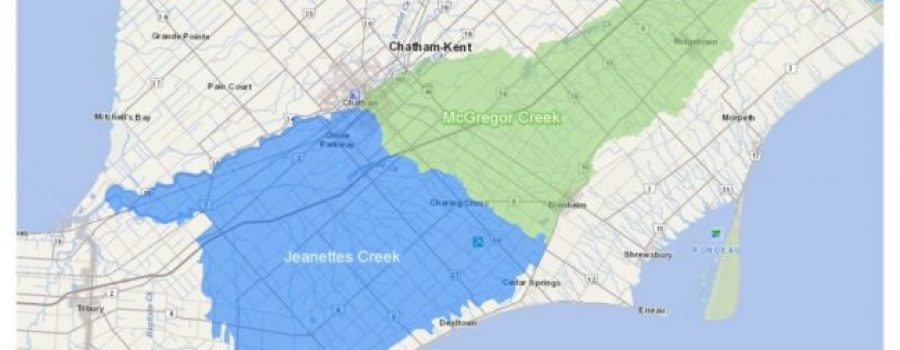Chatham-Kent – The Lower Thames Valley Conservation Authority (LTVCA) is excited to announce the continuation of the McGregor and Jeannettes Creek Phosphorus Reduction Program into 2021. The purpose of the project is to improve soil health and reduce the amount of agriculturally sourced phosphorus entering the Thames River, Lake St. Clair and ultimately the Western Basin of Lake Erie.
Financial contributions will be available to all eligible farmers in the McGregor and Jeannettes Creek subwatershed catchment areas to implement agricultural BMPs during 2021.
In addition to supporting producers with the implementation of BMPs, the LTVCA will monitor water quality, land use, and climate conditions in the subwatersheds. The collected data will be used to configure and calibrate subwatershed Soil and Water Assessment Tool (SWAT) Models, to simulate the phosphorus reduction that results from the implementation of agricultural BMPs.
The project began in 2018 and will conclude by March of 2022. The program offers farmers the opportunity to implement a targeted suite of BMPs at a reduced cost. Cost-shares and $/acre incentives will be available to farmers to implement the following BMPs:
- -Cover crops
- -4R Nutrient Management Plans
- -Alternative Phosphorus Application Practices
- -Erosion Control Structures
- -Marginal & Sensitive Land Restoration
- -Farmer Innovative Solutions
For additional information on the incentives available through the program refer to the following link and program brochure, or contact Colin Little at the LTVCA. The 2021 program application form is also available via the LTVCA website.
If reductions are observed, they will assist with meeting Canada and Ontario’s targets to reduce the phosphorus loads from the Thames River to Lake St. Clair and ultimately Lake Erie. The Thames River has been targeted under the Great Lakes Water Quality Agreement for a 40% reduction in spring total and soluble reactive phosphorus loads (from 2008 levels), as its loads contribute to the development of nearshore cyanobacteria blooms in Lake St. Clair and hypoxia in the central basin of Lake Erie.
“The program will provide farmers with financial incentives to assist with addressing the barriers associated with implementing soil health and water quality BMPs”, explains Colin Little, the LTVCA’s Agricultural Program Coordinator. “Furthermore, we are very excited to work with interested farmers to quantify the potential phosphorus reductions that results from their efforts to implement BMPs in the McGregor and Jeannettes Creek subwatersheds of the Thames River.” This information will be very significant to farmers as the agricultural industry moves forward in addressing the issue of non-point source nutrient losses in the Great Lakes Region.
Environment and Climate Change Canada has approved funding from the Great Lakes Protection Initiative to support program monitoring, research and Best Management Practice (BMP) incentives for subwatershed farmers (2018-2022).
Project monitoring and applied research costs are funded in part through the OMAFRA Canadian Agricultural Partnership (the Partnership), a federal-provincial territorial initiative.
For more program information or inquiries contact:
| Colin Little
Agricultural Program Coordinator |
| [email protected]
226-868-6005 |
-30-

